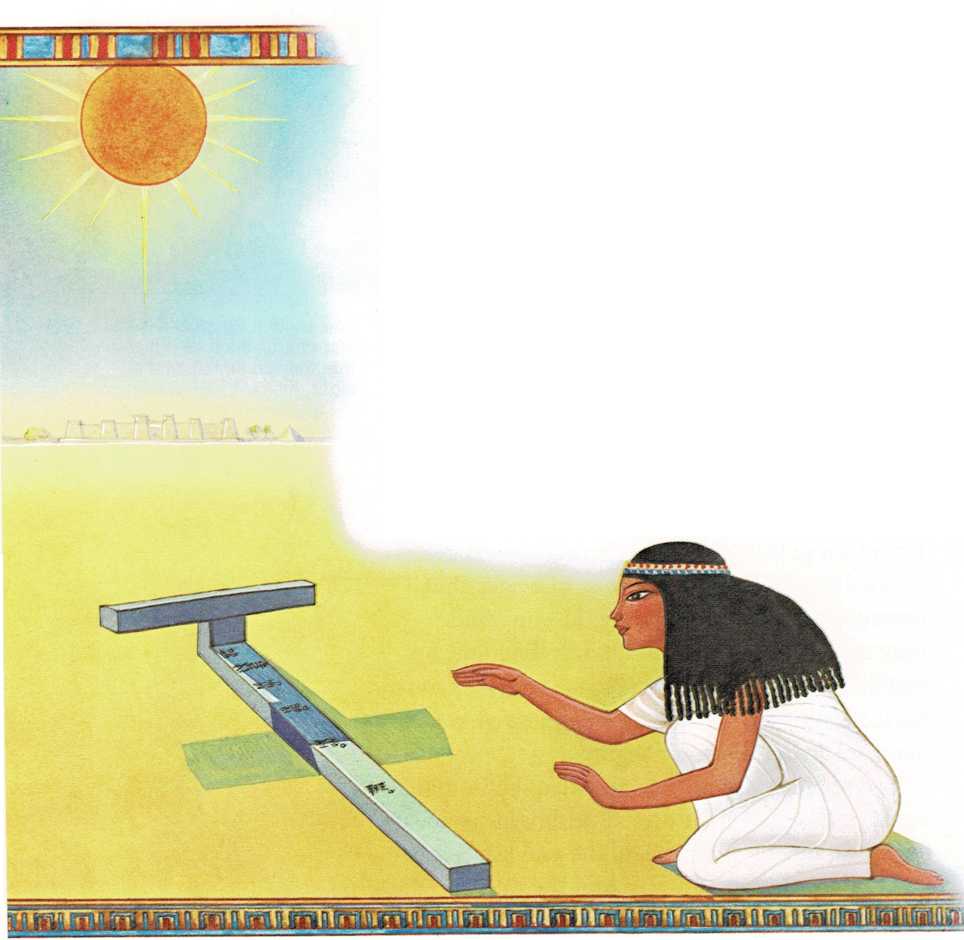Sun clocks
A clock certainly seems nothing like a ruler. Yet, a clock and a ruler
do the same kind of job. They both measure something. A ruler measures
length and a clock measures time.
People of long ago used the sun as a clock. They awoke when the sun came
up and went to bed when it set. During the day, they were able to judge
how much daylight was left by where the sun was in the sky.
By about six thousand years ago, people had learned to use shadows as a
way of measuring time. Of course, shadows depend entirely on the sun.
The shadow of a tree is very long early in the morning, but grows
shorter as the sun rises higher. At midday, with the sun almost
overhead, the shadow may nearly disappear. Then, in the afternoon, the
shadow begins to grow longer again, but in a different direction.
People soon realized that by pushing a stick into the ground, they could
make a shadow. Putting stones or marks along the path of the shadow,
they divided a day into periods of

The ancient Egyptians used a T-shaped sun clock to tell time. The shadow
of the T, moving along the bar, showed the hour.

The Greeks and Romans of about three thousand years ago told time by
sun clocks such as this one. The lines inside the curve stand for
hours. The shadow of the pointer, moving across the lines, showed the
time.
time. Thus, one person could say to another, “Let’s meet tomorrow
morning, when the shadow touches the second mark.”
More than three thousand years ago, the priests of ancient Egypt
measured time with a sun clock shaped like a bent T. The crossbar of the
T stuck up. The long part of the T lay on the ground, and had marks
drawn across it. As the crossbar’s shadow moved along the marks, the
priests could tell the hour of the day.
In the morning, the clock was placed with the crossbar toward the east.
Then the sun would be behind it and the crossbar would cast a shadow. In
the afternoon, the clock was turned around, with the crossbar toward the
west, so that the sun would be behind it again.
People of long ago invented many kinds of sun clocks, or sundials. But
the trouble with a sun clock, of course, is that it is no good at night
or on a cloudy day. So people started looking for ways of measuring time
that didn’t depend on the sun.

